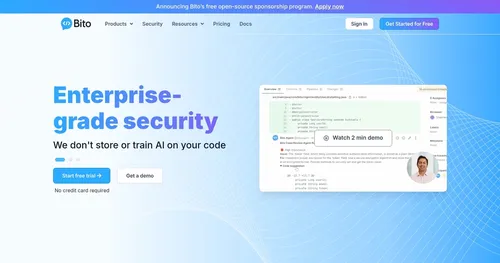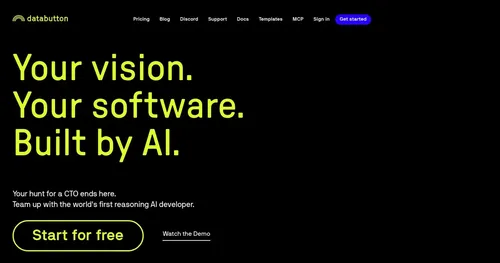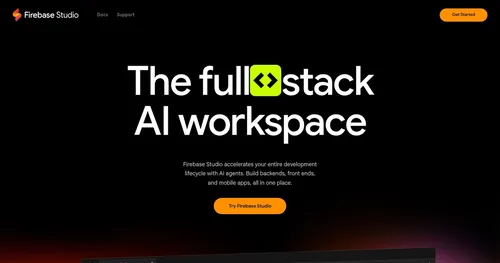FriendliAI
FriendliAI is a generative AI inference platform that optimizes deployment and serving of large language models and multimodal systems. It supports features such as Iteration Batching for continuous request handling, Friendli DNN Library for GPU kernel efficiency, TCache for result reuse, and Native Quantization with options like FP8 and AWQ. The platform includes Dedicated Endpoints for guaranteed capacity, Serverless Endpoints for on demand access, and Container for on premise use. Benchmarks show 10.7 times higher throughput and 6.2 times lower latency compared to baselines on models like Mixtral 8x7B. It integrates with Hugging Face for model imports and provides monitoring tools for performance debugging.
Users benefit from autoscaling that adjusts to traffic, reducing GPU needs by up to six times and costs by 50 to 90 percent. The system handles custom models via uploads or registries, ensuring compatibility across quantization levels without accuracy loss. Partnerships with LG AI Research enable optimized models like EXAONE 4.0.1 32B for reasoning tasks. Monitoring includes dashboards for latency tracking and issue identification. Function calling and structured outputs remain model agnostic, supporting agent development with predefined or custom tools.
In comparisons, FriendliAI outperforms vLLM in production scale with better tail latency management. It requires fewer resources than Cerebras for similar speeds, though the latter excels in wafer scale chips. Pricing uses pay as you go token or time based models, generally lower than Groq for sustained loads. Users appreciate the reliability for high volume services, as seen in SK Telecoms five times throughput gain. Potential issues include setup complexity for non standard templates and limited multimodal depth in serverless mode.
The platform supports over 449,000 Hugging Face models, from text to vision, with one click deploys. Recent updates add custom chat templates and reasoning parsers for broader compatibility. Security features cover cloud and private infrastructures, with Kubernetes integration for containers.
For adoption, evaluate with a serverless endpoint on a key model, compare metrics to current setup, and scale to dedicated if volumes grow.
Video Overview ▶️
What are the key features? ⭐
- Iteration Batching: Handles concurrent generation requests through continuous processing to boost throughput.
- Friendli DNN Library: Delivers optimized GPU kernels tailored for generative AI workloads.
- TCache: Reuses computational results intelligently to reduce latency in repeated queries.
- Native Quantization: Applies efficient quantization techniques like FP8 and AWQ without accuracy trade offs.
- Dedicated Endpoints: Provides guaranteed GPU capacity with autoscaling for production reliability.
Who is it for? 🤔
Examples of what you can use it for 💭
- Developer: Deploys Llama models quickly via Hugging Face integration to prototype chat agents.
- Enterprise IT: Runs custom fine tunes in containers for secure, internal data processing pipelines.
- AI Researcher: Benchmarks multimodal models with quantization to compare throughput on limited GPUs.
- Product Manager: Builds tool enabled agents using function calls for automated customer support flows.
- Startup Founder: Scales inference for personalized bots, cutting costs during user growth spikes.
Pros & Cons ⚖️
- Low latency output
- Cost efficient scaling
- Easy model imports
- Multimodal limits
- Cluster knowledge needed
FAQs 💬
Related tools ↙️
-
 Bito
The AI virtual assistant for developers, designed to enhance your coding experience
Bito
The AI virtual assistant for developers, designed to enhance your coding experience
-
 Databutton
An AI-powered platform that empowers individuals to swiftly build and deploy web applications
Databutton
An AI-powered platform that empowers individuals to swiftly build and deploy web applications
-
Syntha AI Generates, converts, and optimizes code across 60+ languages
-
 Firebase Studio
An AI-enhanced, cloud-based development environment designed to streamline app development
Firebase Studio
An AI-enhanced, cloud-based development environment designed to streamline app development
-
CopilotKit Integrates AI copilots into apps with real-time context and UI control
-
Kiro Transforms prompts into structured code with specs and agents

